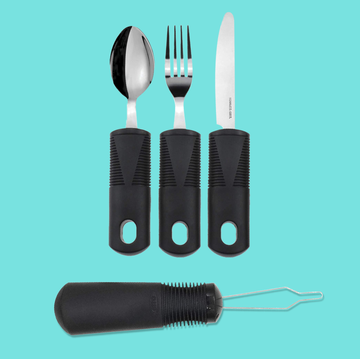15 Mindfulness Activities to Reduce Stress and Increase Calm
Practicing simple techniques and exercises can help you improve mental clarity and curb anxiety.

When we are stressed-out, sad, anxious, irritated, or angry, we typically want those feelings to just disappear. This is natural. It can be difficult to sit with uncomfortable emotions, especially when we feel like there's no way out. We might try to drown them out with Netflix, work, exercise, or Oreos. Or maybe we try to blast out the blues with positive affirmations or pep talks in the mirror.
And while some of these activities can be helpful in the moment, denying our feelings can actually make them more intense and negatively effect our physical and mental health. So how can we healthily face and release our emotions instead of sweeping them under the rug? One way is to practice mindfulness: the practice of becoming self-aware in the present moment.
"[Mindfulness] allows us to bring a healthy discernment into our everyday experience and identify the elements of our thought, speech, and behavior that lead to suffering and those that lead to freedom," says NYC-based meditation instructor Kirat Randhawa. "Over time we can strengthen the causes for freedom and diminish the causes of suffering. Once we recognize the necessary conditions for happiness, mindfulness allows us to meet the experience with an embodied presence, thereby truly enjoying the unfolding of each moment."
While happiness and joy may not be the immediate results of doing a mindfulness exercise, doing them consistently can help put an end to excessively ruminating on the past and worrying over the future. What's more, it can help you develop more self-compassion, says therapist and yoga instructor Magdalene Martinez, LMSW.
"Mindfulness is the practice of being at ease with what is," she adds. "The more you practice, the easier it gets to be more accepting of whatever feelings are present."
The cool thing about mindfulness is that it can be practiced by anyone — even kids — in any place, at any time. So whether you want to learn to get in touch with your own emotions or teach mindfulness to your children, there's something out there for you. We've asked experts to round up the best mindfulness activities you can incorporate into your daily routine, share with others, or use whenever you are feeling overwhelmed. Pick a couple, try them out every day for a week, and note what you've learned about your mental landscape.
Adele Jackson-Gibson is a certified fitness coach, model, and writer. She earned her master's in Journalism from NYU, her bachelor's in Literature from Yale University, and has since written for various sports, fitness, beauty, and culture outlets.
Watch Next


Inspiring Quotes From People with Disabilities

Here's How to Reduce Inflammaging

The Right Way to Take Magnesium for Sleep

How to Share a Bed With Your Partner






















